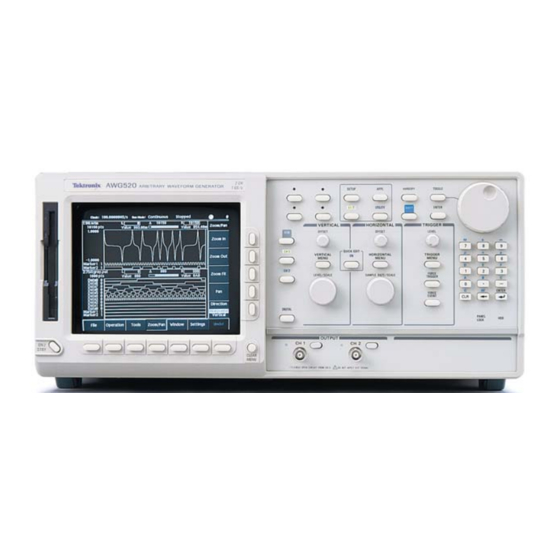
Tektronix AWG520 Manuals
Manuals and User Guides for Tektronix AWG520. We have 3 Tektronix AWG520 manuals available for free PDF download: User Manual, Service Manual, Specification Sheet
Tektronix AWG520 User Manual (464 pages)
Arbitrary Waveform Generator
Brand: Tektronix
|
Category: Test Equipment
|
Size: 5 MB
Table of Contents
Advertisement
Tektronix AWG520 Service Manual (273 pages)
Arbitrary Waveform Generator
Brand: Tektronix
|
Category: Portable Generator
|
Size: 6 MB
Table of Contents
Tektronix AWG520 Specification Sheet (4 pages)
Arbitrary Waveform Generators
Brand: Tektronix
|
Category: Portable Generator
|
Size: 0 MB
Advertisement


